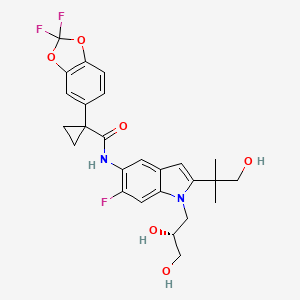In continuation of my update on fingolimod

The U.S. Food and Drug Administration today approved Gilenya (fingolimod) to treat relapsing multiple sclerosis (MS) in children and adolescents age 10 years and older. This is the first FDA approval of a drug to treat MS in pediatric patients.
“For the first time, we have an FDA-approved treatment specifically for children and adolescents with multiple sclerosis,” said Billy Dunn, M.D., director of the Division of Neurology Products in the FDA’s Center for Drug Evaluation and Research. “Multiple sclerosis can have a profound impact on a child’s life. This approval represents an important and needed advance in the care of pediatric patients with multiple sclerosis.”
Gilenya was first approved by the FDA in 2010 to treat adults with relapsing MS.
MS is a chronic, inflammatory, autoimmune disease of the central nervous system that disrupts communication between the brain and other parts of the body. It is among the most common causes of neurological disability in young adults and occurs more frequently in women than men. For most people with MS, episodes of worsening function and appearance of new symptoms, called relapses or flare-ups, are initially followed by recovery periods (remissions). Over time, recovery may be incomplete, leading to progressive decline in function and increased disability. Most people with MS experience their first symptoms, like vision problems or muscle weakness, between the ages of 20 to 40. Two to five percent of people with MS have symptom onset before age 18 and estimates suggest that 8,000 to 10,000 children and adolescents in the U.S. have MS.
The clinical trial evaluating the effectiveness of Gilenya in treating pediatric patients with MS included 214 evaluated patients aged 10 to 17 and compared Gilenya to another MS drug, interferon beta-1a. In the study, 86 percent of patients receiving Gilenya remained relapse-free after 24 months of treatment, compared to 46 percent of those receiving interferon beta-1a.
The side effects of Gilenya in pediatric trial participants were similar to those seen in adults. The most common side effects were headache, liver enzyme elevation, diarrhea, cough, flu, sinusitis, back pain, abdominal pain and pain in extremities.
Gilenya must be dispensed with a patient Medication Guide that describes important information about the drug’s uses and risks. Serious risks include slowing of the heart rate, especially after the first dose. Gilenya may increase the risk of serious infections. Patients should be monitored for infection during treatment and for two months after discontinuation of treatment. A rare brain infection that usually leads to death or severe disability, called progressive multifocal leukoencephalopathy (PML) has been reported in patients being treated with Gilenya. PML cases usually occur in patients with weakened immune systems. Gilenya can cause vision problems. Gilenya may increase the risk for swelling and narrowing of the blood vessels in the brain (posterior reversible encephalopathy syndrome). Other serious risks include respiratory problems, liver injury, increased blood pressure and skin cancer. Gilenya can cause harm to a developing fetus; women of child-bearing age should be advised of the potential risk to the fetus and to use effective contraception.








 Ivacafto
Ivacafto